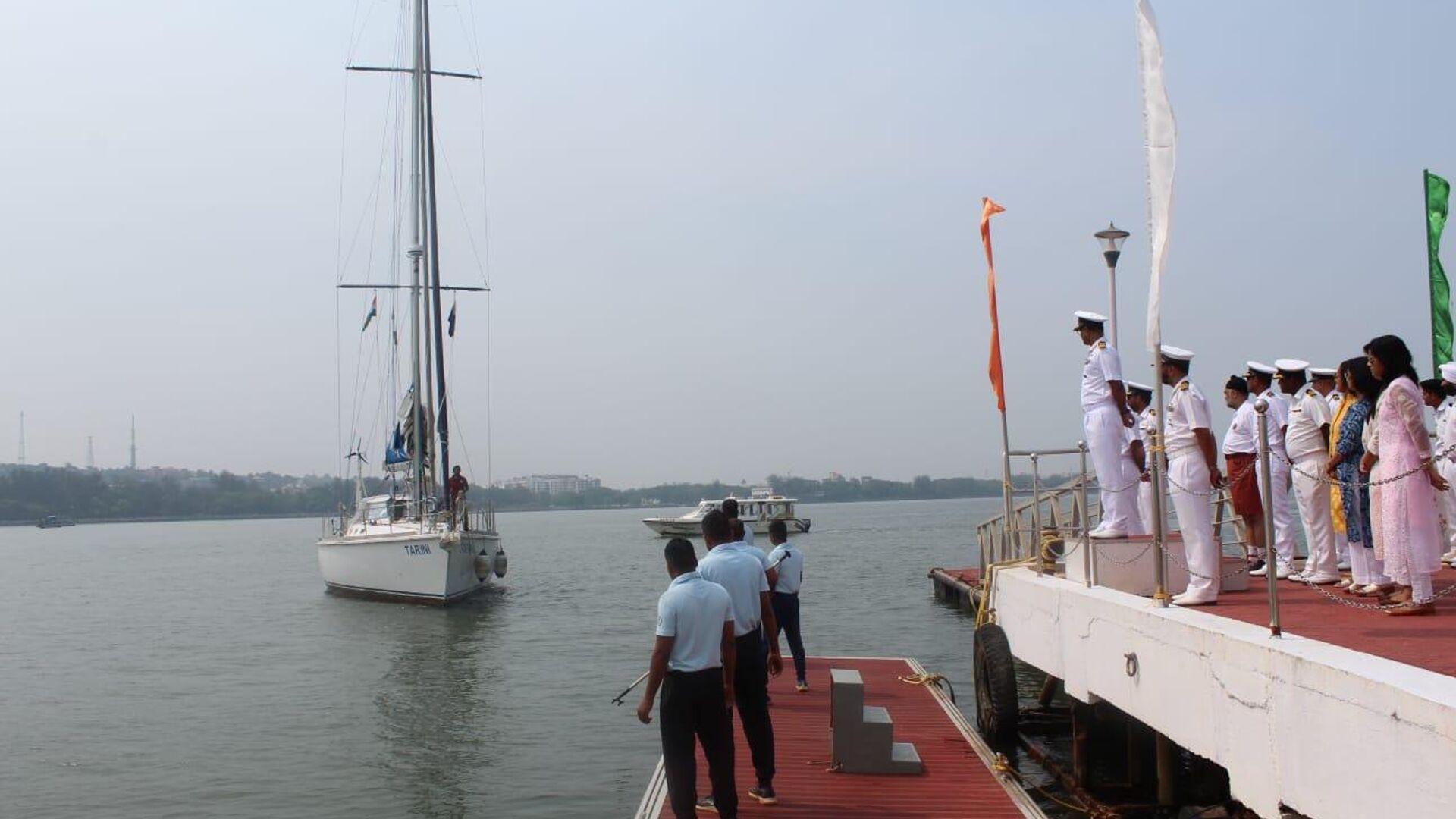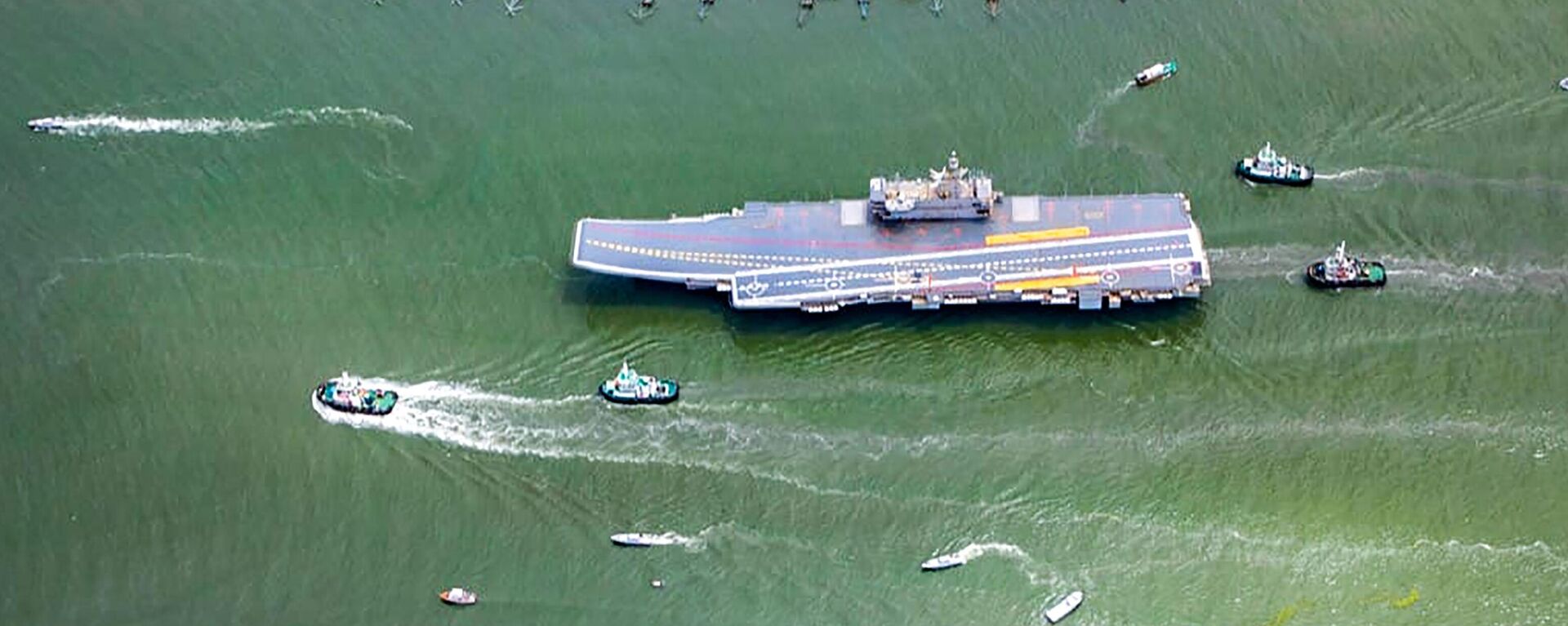https://sputniknews.in/20240903/how-maritime-soft-power-bolsters-indias-global-profile-8097052.html
How Maritime Soft Power Bolsters India's Global Profile
How Maritime Soft Power Bolsters India's Global Profile
Sputnik India
Indian Navy's HADR, NEO, and SAR operations are deeply rooted in the philosophy of "Vasudhaiva Kutumbakam" or "The World is One Family" and are not just acts of compassion but are strategically aligned with India's broader diplomatic initiatives like SAGAR (Security and Growth for All in the Region), military veterans have said.
2024-09-03T21:21+0530
2024-09-03T21:21+0530
2024-09-03T21:21+0530
sputnik opinion
india
sri lanka
maldives
indian navy
houthis
hezbollah
maritime security
yemen
lebanon
https://cdn1.img.sputniknews.in/img/07e8/04/16/7194049_0:68:1296:797_1920x0_80_0_0_d03efd552c489d7b5e094f6d129ecd3e.jpg
The Navy's HADR, NEO, and SAR missions are deeply rooted in the philosophy of "Vasudhaiva Kutumbakam" or "The World is One Family." These are not merely acts of compassion but are strategically aligned with India's broader diplomatic initiatives, such as SAGAR (Security and Growth for All in the Region), according to military veterans.Through SAGAR, India has articulated a vision of regional security, stability, and cooperation, with the Navy playing a central role in translating this vision into action, Admiral (Retd) SN Ghormade, former Vice Chief of India's Naval Staff, noted.He highlighted the 2004 Indian Ocean Tsunami as a pivotal moment that demonstrated India's capability to provide immediate and large-scale assistance to affected countries like Sri Lanka, the Maldives, and Indonesia.Indian Navy: First Responder in IORGhormade pointed out that this laid the groundwork for India's evolving role as a "first responder" in the region. Subsequent HADR missions, such as those following Cyclone Nargis in Myanmar and the Maldives Water Crisis, reinforced this image, demonstrating India's commitment to its neighbors.He elaborated on the Navy's growing collaboration with other nations in joint HADR and SAR exercises, which enhances its disaster response capacity. These partnerships not only improve operational efficiency but also strengthen diplomatic ties, reinforcing India's role as a stabilizing force in the region.Meawnhile, technological advancements have also played a crucial role in enhancing the Navy's capabilities across HADR, NEO, and SAR operations. The integration of satellite-based communication systems, UAVs, and other innovations ensures that India's crisis response is swift and effective. This technological edge positions India as a leader in humanitarian efforts, further cementing its reputation as a compassionate and responsible global power.Meanwhile, Admiral (Retd) Karambir Singh, who served as the chief of the Indian Navy from 2019 to 2021, stated that India's maritime force has worked diligently to add meaning and specificity to India's visions of "Neighborhood First," SAGAR, and a Free and Open Indo-Pacific, positioning itself as a partner for good.He cited instances where Indian naval ships in the Gulf of Aden assisted merchant vessels under attack by Houthis and thwarted piracy attempts and gave other examples.He opined that piracy poses a global threat to trade, the lifeblood of the global economy. India, through its Navy, remains a responsible regional player committed to ensuring the seas remain free, open, and secure. That's why the Navy's actions in rescuing mariners, regardless of nationality, demonstrate India's steadfast commitment to providing public goods in the region, he stressed.In the meantime, former Indian Navy Chief Admiral (Retd) Sunil Lanba believes that natural calamities, particularly cyclones in the Bay of Bengal prepared the Navy for its larger HADR missions.He added that during cyclones, drinking water contamination becomes a significant issue, but all Indian Navy ships are now equipped to distill seawater into potable water, addressing one of the more challenging aspects of such crises.Additionally, the Indian Ocean Naval Symposium (IONS) includes a HADR vertical, with India serving as the coordinator. Lanba mentioned that this body was established in 2008, and the Indian Navy successfully persuaded member nations to sign Standard Operating Procedures (SOPs) for HADR. Since then, the Navy has been actively participating in disaster management exercises under the IONS initiative.Among other achievements, the Indian Navy's first major NEO operation occurred in Lebanon in 2006 during the conflict between Hezbollah and Israel, evacuating Indians and nationals from other countries like Sri Lanka and Nepal.Lanba views the recent rescue of Pakistani sailors as a perfect example of the Indian Navy's capability to operate on the high seas and address any situation. It also showcased the Navy's proactive approach to tackling piracy.In turn, Vice Admiral (Retd) Biswajit Dasgupta, a former chief of the Indian Navy's Eastern Command emphasised that the Navy has four major roles – military, constabulary, diplomatic, and benign. The HADR is a part of the last one.He stressed that the Indian Navy, being the largest and most potent force in the Indian Ocean Region, is the primary manifestation of the nation's maritime power. It thus bears significant responsibility in HADR and evacuation operations within the region.Dasgupta added that evacuation operations could be either combatant or non-combatant, depending on the situation in the area requiring evacuation. Moreover, humanitarian tasks must remain neutral, regardless of country or nationality.
https://sputniknews.in/20240808/whats-behind-navys-pursuit-of-more-aircraft-carriers-7985436.html
india
sri lanka
maldives
yemen
lebanon
indonesia
myanmar
bay of bengal
arabian sea
Sputnik India
feedback.hindi@sputniknews.com
+74956456601
MIA „Rossiya Segodnya“
2024
Pawan Atri
https://cdn1.img.sputniknews.in/img/07e6/0c/13/139630_147:0:831:684_100x100_80_0_0_8fa2b25903e7787fe6a2698552c167df.png
Pawan Atri
https://cdn1.img.sputniknews.in/img/07e6/0c/13/139630_147:0:831:684_100x100_80_0_0_8fa2b25903e7787fe6a2698552c167df.png
News
en_IN
Sputnik India
feedback.hindi@sputniknews.com
+74956456601
MIA „Rossiya Segodnya“
Sputnik India
feedback.hindi@sputniknews.com
+74956456601
MIA „Rossiya Segodnya“
Pawan Atri
https://cdn1.img.sputniknews.in/img/07e6/0c/13/139630_147:0:831:684_100x100_80_0_0_8fa2b25903e7787fe6a2698552c167df.png
indian navy, indian navy news, indian navy humanitarian role, indian navy humanitarian assistance and disaster relief operations, indian navy hadr operations, indian navy soft power, indian navy search and rescue operations, indian navy sar operations, indian navy non-combatant evacuations, indian navy neo operations, indian navy 2004 tsunami, indian navy humanitarian assistance, indian navy rescue of pakistani sailors, indian navy ior, indian navy indian ocean region,
indian navy, indian navy news, indian navy humanitarian role, indian navy humanitarian assistance and disaster relief operations, indian navy hadr operations, indian navy soft power, indian navy search and rescue operations, indian navy sar operations, indian navy non-combatant evacuations, indian navy neo operations, indian navy 2004 tsunami, indian navy humanitarian assistance, indian navy rescue of pakistani sailors, indian navy ior, indian navy indian ocean region,
How Maritime Soft Power Bolsters India's Global Profile
The Indian Navy's operations in Humanitarian Assistance and Disaster Relief (HADR), Non-Combatant Evacuations (NEO), and Search and Rescue (SAR) are increasingly recognized as crucial elements of India's soft power strategy. Sputnik India explores how these efforts are elevating the country's global profile.
The Navy's HADR, NEO, and SAR missions are deeply rooted in the philosophy of "Vasudhaiva Kutumbakam" or "The World is One Family." These are not merely acts of compassion but are strategically aligned with India's broader diplomatic initiatives, such as SAGAR (Security and Growth for All in the Region), according to military veterans.
Through SAGAR, India has articulated a vision of regional security, stability, and cooperation, with the Navy playing a central role in translating this vision into action, Admiral (Retd) SN Ghormade, former Vice Chief of India's Naval Staff, noted.
He highlighted the 2004 Indian Ocean Tsunami as a
pivotal moment that demonstrated India's capability to provide immediate and large-scale assistance to affected countries like
Sri Lanka, the Maldives, and Indonesia.Indian Navy: First Responder in IOR
Ghormade pointed out that this laid the groundwork for India's evolving role as a "first responder" in the region. Subsequent HADR missions, such as those following Cyclone Nargis in Myanmar and the Maldives Water Crisis, reinforced this image, demonstrating India's commitment to its neighbors.
"Alongside HADR missions, the Indian Navy's NEOs and SAR operations have significantly enhanced India's soft power. Operations like the evacuation of Indian and foreign nationals from Lebanon during Operation Sukoon in 2006 and the rescue efforts during the MSC Daniela fire in 2017 showcase the Navy's readiness to respond to crises, both natural and man-made. These missions highlight India's commitment to the safety and security of all individuals," Ghormade told Sputnik India on Monday.
He elaborated on the Navy's growing collaboration with other nations in joint HADR and SAR exercises, which enhances its disaster response capacity. These partnerships not only improve operational efficiency but also strengthen diplomatic ties, reinforcing India's role as a stabilizing force in the region.
Meawnhile, technological advancements have also
played a crucial role in enhancing the Navy's capabilities across HADR, NEO, and SAR operations. The integration of
satellite-based communication systems, UAVs, and other innovations ensures that India's crisis response is swift and effective. This technological edge positions India as a leader in humanitarian efforts, further cementing its reputation as a compassionate and
responsible global power.
"The rescue of 23 Pakistani sailors from Somali pirates by the Indian Navy earlier this year exemplifies India's commitment to humanitarian principles that transcend geopolitical boundaries. This operation not only demonstrated the Navy's operational excellence but also underscored India's belief in 'Vasudhaiva Kutumbakam,' where the world is seen as one family," Ghormade emphasised.
Meanwhile,
Admiral (Retd) Karambir Singh, who served as the chief of the Indian Navy from 2019 to 2021, stated that India's maritime force has
worked diligently to add meaning and specificity to India's visions of "Neighborhood First," SAGAR, and a
Free and Open Indo-Pacific, positioning itself as a partner for good.
He cited instances where Indian naval ships in the Gulf of Aden assisted merchant vessels under attack by Houthis and thwarted piracy attempts and gave other examples.
"Also, during the COVID pandemic, the Navy reached out to the Indian Ocean Region countries, especially the island nations, and provided them succour in the form of medical assistance and supply of urgent medicines," Singh said in a conversation with Sputnik India.
He opined that piracy poses a global threat to trade, the lifeblood of the global economy. India, through its Navy, remains a responsible regional player committed to ensuring the seas remain free, open, and secure. That's why the Navy's actions in rescuing mariners, regardless of nationality, demonstrate India's steadfast commitment to providing public goods in the region, he stressed.
In the meantime, former Indian Navy Chief
Admiral (Retd) Sunil Lanba believes that natural calamities, particularly cyclones
in the Bay of Bengal prepared the Navy for its larger HADR missions.
"The Navy introduced the concept of the Disaster Management Brick, which includes clothing, rations, medicines, and other essentials, with each brick designed to support 50 people. Ships, particularly those deployed overseas or in operational areas, carry these bricks, ensuring they are prepared to offer assistance whenever needed," Lanba explained in a conversation with Sputnik India.
He added that during cyclones, drinking water contamination becomes a significant issue, but all Indian Navy ships are now equipped to distill seawater into potable water, addressing one of the more challenging aspects of such crises.
Additionally, the
Indian Ocean Naval Symposium (IONS) includes a HADR vertical, with India serving as the coordinator. Lanba mentioned that this body was established in 2008, and the Indian Navy successfully persuaded member nations to sign Standard Operating Procedures (SOPs) for HADR. Since then, the Navy has been actively participating in disaster management exercises under the
IONS initiative.Among other achievements, the Indian Navy's first major NEO operation occurred in Lebanon in 2006 during the conflict between Hezbollah and Israel, evacuating Indians and nationals from other countries like Sri Lanka and Nepal.
Lanba views the recent rescue of Pakistani sailors as a perfect example of the Indian Navy's capability to operate on the high seas and address any situation. It also showcased the Navy's proactive approach to tackling piracy.
"For instance, when piracy was at its peak in the Gulf of Eden during 2009, 10, 11, 12, we were the first Navy to take proactive action, sinking a mothership being commanded by Somali pirates. Indeed, the Indian Navy has been quite proactive compared to the Western Navies in taking action on the seas," he remarked.
In turn, Vice Admiral (Retd) Biswajit Dasgupta, a former chief of the Indian Navy's Eastern Command emphasised that the Navy has four major roles – military, constabulary, diplomatic, and benign. The HADR is a part of the last one.
He stressed that the Indian Navy, being the largest and most potent force in the Indian Ocean Region, is the primary manifestation of the
nation's maritime power. It thus bears significant responsibility in HADR and evacuation operations within the region.
Dasgupta added that evacuation operations could be either combatant or non-combatant, depending on the situation in the area requiring evacuation. Moreover, humanitarian tasks must remain neutral, regardless of country or nationality.
"These efforts would lose their moral purpose if they were to differentiate between countries or nationals. Humanitarian crises and disasters, whether natural or man-made, must unite all nations and agencies in alleviating the suffering of affected people," Dasgupta concluded.



